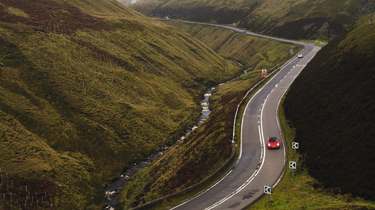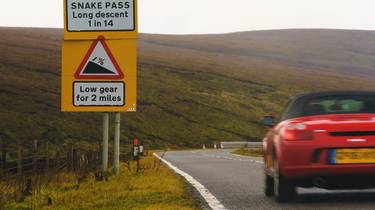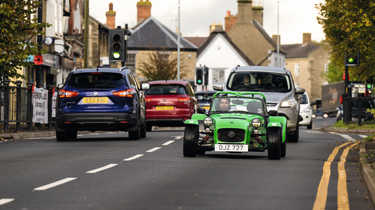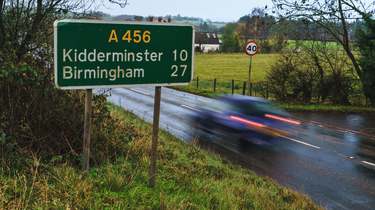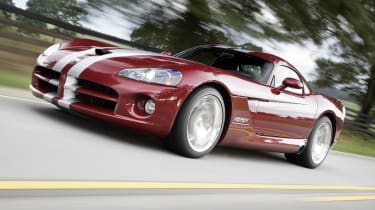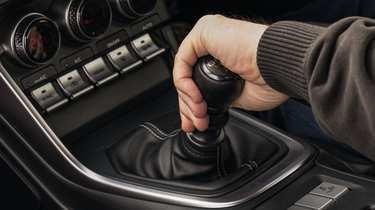Driving masterclass: how to be a safer and better driver
From mastering the everyday commute to unlocking the full potential of your performance car, our new series will help you become safer, more confident and ultimately more skilled behind the wheel
You read evo, you love cars, so you probably love driving too, recognising that it’s a skill to be nurtured and developed on every drive. Sadly, many people treat driving as a chore and it’s easy to see why: high levels of traffic, speed cameras ready to punish small transgressions, and new cars crammed with assistance and safety features that risk diminishing the involvement of the person behind the wheel. But there is still a great deal of real driving to be done on every journey, and an engaged, skilled driver will not only be safer, they will also make a positive difference and find satisfaction and enjoyment, even on busy roads and on the regular commute.
We get regular enquiries from readers fortunate to own high-performance cars who want to feel confident and safe enjoying their abilities and get more from their vehicles. Many drivers haven’t had any training since they passed their test, and while we all hopefully learn through experience, every driver can benefit from driver training and from considering their driving afresh.
> How to position your car on the road: driving masterclass
Most of us here at evo have been coached by well-known experts including Paul Ripley, John Lyon and Hugh Noblett, and that training has stuck with us. We use it every day without thinking and it has served us and the magazine well, with remarkably few ‘incidents’ these last 25 years.
In this new series we’ll look at the fundamentals of good road driving – an approach to driving that can be applied to all journeys. Later on, we’ll cover ‘core’ high-performance skills such as heel and toe downshifting, trail-braking and limit handling – understeer and oversteer – and we’ll conclude with a look at trackday driving.
We hope this series will prove informative and encourage you to scrutinise and self-evaluate your driving and consider an advanced driving course as a great step to take.
The fundamentals of good road driving
As driving guru Paul Ripley described in our interview with him in evo 325, high-performance driving isn’t about being able to control a car at the limit, it’s about a higher level of performance from you, the driver. All of the instructors we’ve worked with aim to raise your standard of driving to the level where you are confident using the performance of your car but are always aware of what the appropriate speed is for any situation. It’s not so much about having a skill such as being able to hold an oversteer slide – techniques can be learned through practice – as having an approach to driving that’s founded on observation, planning, anticipation and getting the mindset right.
The dream drive scenario is you and the car on a brilliant road – in tune with the car, stroking it along, reading the twists and turns to find the ideal speed, gear and line for each corner so that the car is balanced on the throttle during the corner and neatly and safely positioned on the exit. Get it all right and it’s a wonderful, natural flow, making good progress with no surprises. It’s controlled, safe and deeply satisfying.
However, most of our driving is in stark contrast to this – the everyday drive on busy roads, which can feel constraining and unengaging. Yet the level of skill required to drive well in these circumstances is even greater, and relies on exactly the same fundamentals: observation, planning, anticipation and attitude. No two journeys are the same and honing your skills here will raise the standard of your driving generally.
Observation, planning & anticipation
Using observation, planning and anticipation you can manage the space around you and dictate and control your own drive and your own mindset. Having a good view of what’s happening ahead, reading the road and seeing what traffic ahead is doing (and what’s going on behind) allows you to anticipate what is going to happen and plan your driving accordingly.
Good positioning of your car on the road is essential whether you’re tackling a B-road or in town traffic. In town, if you’re too close to the car in front you have to brake when it brakes. Back off a couple of car lengths and you’ll have a better view of what’s happening ahead and have the space to determine the flow of your drive, to smooth it out. The same applies on an A- or B-road, though here you can also enhance your view with the position of your car on the road, if it’s safe to do so. For instance, being closer to the centre white line approaching left-handers allows you to see further around the corner, giving earlier visual clues of hazards or oncoming traffic.
It’s easy to switch off and drift along when you’re on a busy A-road with a long line of traffic ahead and a near-constant stream coming the other way, with little prospect of making progress. But back off a few car lengths and you can see much further, see what is coming up on the road and what the traffic ahead is doing. You might see distant traffic lights changing to red, or the lead car indicating to turn off, and be able to ease off the throttle to maintain your gap and smooth out your progress. If it’s the start of a dual carriageway coming up, you can weigh up and plan for the potential to make progress.
Tell me about it
Many advanced driving courses encourage you to deliver a running commentary as you drive, to say what’s going on around you, what junctions and road signs you can see, to describe what you’re doing, what you’re going to do. You’ll probably feel self-conscious but it’s a valuable exercise, heightening your awareness of what’s going on around you and how you’re planning to respond to it. Try it on a familiar drive by stating every traffic sign you see, linking warning signs with a mirror check, then adding the road markings and what they mean. I bet within a few miles you’ll spot a sign or turning you haven’t noticed before.
As well as a running commentary, another way to hone your observation, planning and anticipation skills is to try to improve the fuel economy of your car. This works best if your car has a trip computer, giving you instant feedback. The challenge isn’t to go as slow as you can, it’s to stay with the flow of the traffic but to try not to come to a dead stop at roundabouts, traffic lights and junctions with a give way. If you can keep moving even just a little, blending in on roundabouts or anticipating the change of the lights so you’re still rolling as the queue starts to pull away, you’ll avoid the hit to fuel economy. You should be fully aware of traffic behind you, of course. This skill creates an enjoyable flow to the drive too, using your throttle to manage the ‘ebb and flow’ of the speed you drive at, rather than constantly accelerating and braking as many tend to do.
Perhaps it would help imagining you’ve got a very nervous passenger with you and you’re trying to make them feel totally at ease with the drive. No strong braking, no harsh acceleration, maintaining a good pace on a light throttle in a high gear, flowing gently along. There is a certain satisfaction to that. It’s not the same satisfaction that you get from stringing all the corners of a great road together with the car perfectly balanced on the power, but it relies on the same level of anticipation and awareness, and a heightened degree of engagement with the process. Great observation, planning and engrossed anticipation too, and the right mindset to not get carried away.
Another training trick is to drive a great road and try to read and respond to the road without using the brakes, just managing your speed by lifting the throttle to get to corners at the correct speed, or slowing for speed limits. This delivers another enthralling and deeply satisfying aspect to driving like the experts do.
Attitude
Given the levels of traffic today, it’s often not possible to make as much progress as you might like, and this is the most obvious example of when your attitude matters. It’s about managing your expectations and emotions. On busy roads, opportunities to overtake may be minimal, even if you’re driving something with huge performance. Before setting out, accept that your journey will take as long as it takes. Traffic may thin out later on, but it may not. We’re all so well connected now that we’re able to let people know we might be late. If you really can’t be late, set off much earlier; you’ll be much more relaxed and in fine fettle mentally.
It can be frustrating driving a car with huge potential but not being able to use or feel its performance. I’ve been lucky enough to drive numerous supercars, but at times I’ve found myself having to drive them for miles in heavy traffic on great roads and not had a chance to exploit their performance. It happens. Accept it. The challenge of driving well remains – being smooth, well positioned, able to assess risks and manage opportunities – because at some point an opportunity to make progress will probably appear. Keep scanning and planning.
Ripley’s Top Tip: The right mindset
‘One of the greatest challenges for any driver comes from the attitudinal element of their driving,’ explains Paul Ripley. ‘Your attitude encompasses the way you think and feel and act and react – it includes your core values and beliefs and personality traits. Basically, it’s the mindset you take into your car when you drive, and as your driving skills improve, your mental control over your attitude needs to fully complement this forward progression.
‘A driver’s attitude significantly impacts their ability to reach peak performance. By mastering key psychological factors such as emotional control, behaviour and mental focus, drivers can achieve a higher level of skill and safety overall. We call this “The Mindset Factor”. It’s a powerful concept that emphasises the importance of discipline and responsible driving.
‘Without it, drivers will never reach their full driving potential and may occasionally revert to challenging others on the road for irrelevant reasons, their behaviour changing from friendliness to total hostility without warning. Allowing aggression and retaliation to rule your actions is not what great driver performance is about.
‘My words of wisdom? Never be the aggressor – be the peacemaker. Inject the safety into any situation you meet on the road. Safety plays a significant role in the make-up of a great high performing driver. Believe me, it deeply counts!’
Attitude in practice: the Dodge Viper
A Dodge Viper GTS, right-hand drive, in France. Here was a car and circumstances where driving attitude really came to the fore. The restraint required felt absurd in such a potent machine. But, as my co-driver had already proved, wanting to feel and hear the 8-litre V10 by snatching at half chances and not driving to what he could see or finessing the awkward and hefty manual shift, made for a scary, slightly out-of-control feeling.
We swapped seats, and using the car’s performance only when there was the space and visibility to do so initially felt suffocating, but as the miles racked up, more and better opportunities to use the performance appeared and were taken. Driving this brutish car smoothly and using its performance and grip only when the situation allowed was ultimately very satisfying and much, much more relaxing and enjoyable for both driver and passenger (sitting on the wrong side of course!).
As Ripley says: ‘Cars such as this demand total respect and you have to deliver what’s necessary to manage and maintain the safety and enjoyment factors.’
Car sympathy
Before you can drive quickly, you need to be able to use your car’s controls with sympathy and finesse. Allow your car to warm up thoroughly before using lots of its performance, but rather than sitting waiting for the engine to come up to temperature, set off as soon as you’re able (assuming all windows are clear) because the rest of the drivetrain needs to be up to temperature too.
Steering inputs should be smooth, initial braking should be so gentle your passenger can’t detect it, and in a manual, you shouldn’t need to use more than double the idle revs to pull away. Gearchanges in manuals should be seamless and you should position your hand on the gear lever to ensure that it moves across the gate positively to the next gear in a relaxed, flowing style.
In a right-hand-drive car, shifting from first to second your palm should be on the right-hand side of the gear shifter, so there’s some pressure keeping the lever to the left as you pull down into second. The shifts that most need this guidance are the diagonals, second to third, fifth to fourth, etc. It might feel like overkill when you’re ambling about but, as with a lot of these good habits, the quicker you drive, the more important it becomes that this is instinctive.
Speed
On all the high-performance driving courses I’ve taken, there is one significant agreement: that urban speed limits are non-negotiable, be it a 20, 30 or 40mph limit. Speeding in town is high risk, especially for pedestrians and cyclists, and there’s virtually no practical benefit; briefly hitting, say, 40 in a 30 zone will shave hardly any time from your journey. What are you going to do with those two seconds you saved?
However, the energy of your car travelling 10mph faster, and the extended stopping distance, makes you a greater hazard to more vulnerable road users. Develop the discipline to stay legal and more in control and be safer as a result. After a while, slowing for town limits is as instinctive as pulling on a seat belt. Speed should always be appropriate, though. Sometimes even 20 in a 30 is too high; in a bustling high street, for instance. Never consider the posted limit as a target speed – it’s just the maximum speed allowed. This is about sensibility and discipline and both are fully necessary if you want to improve your driving, mindset and skill set.
A friend runs speed awareness courses that people can take instead of getting points on their licence. She always asks them why they were speeding. Most say because they were late. Her response is: ‘If you caused an accident because you were speeding and killed someone, how would you feel about calling the family of the deceased and saying: “I’m sorry your relative is dead, I was late for a meeting about xyz?”’
In short, speeding in town is simply not worth the risk and not what enhancing driver performance is about either.
About Paul Ripley
Paul is a major force in the world of high-performance driving, sharing his unique expertise through driver coaching, media appearances, talks, and now his invaluable assistance with this evo series. For more information visit www.drivingmasters.uk or email paul.ripley@drivingmasters.uk.
This story was first featured in evo issue 326.

